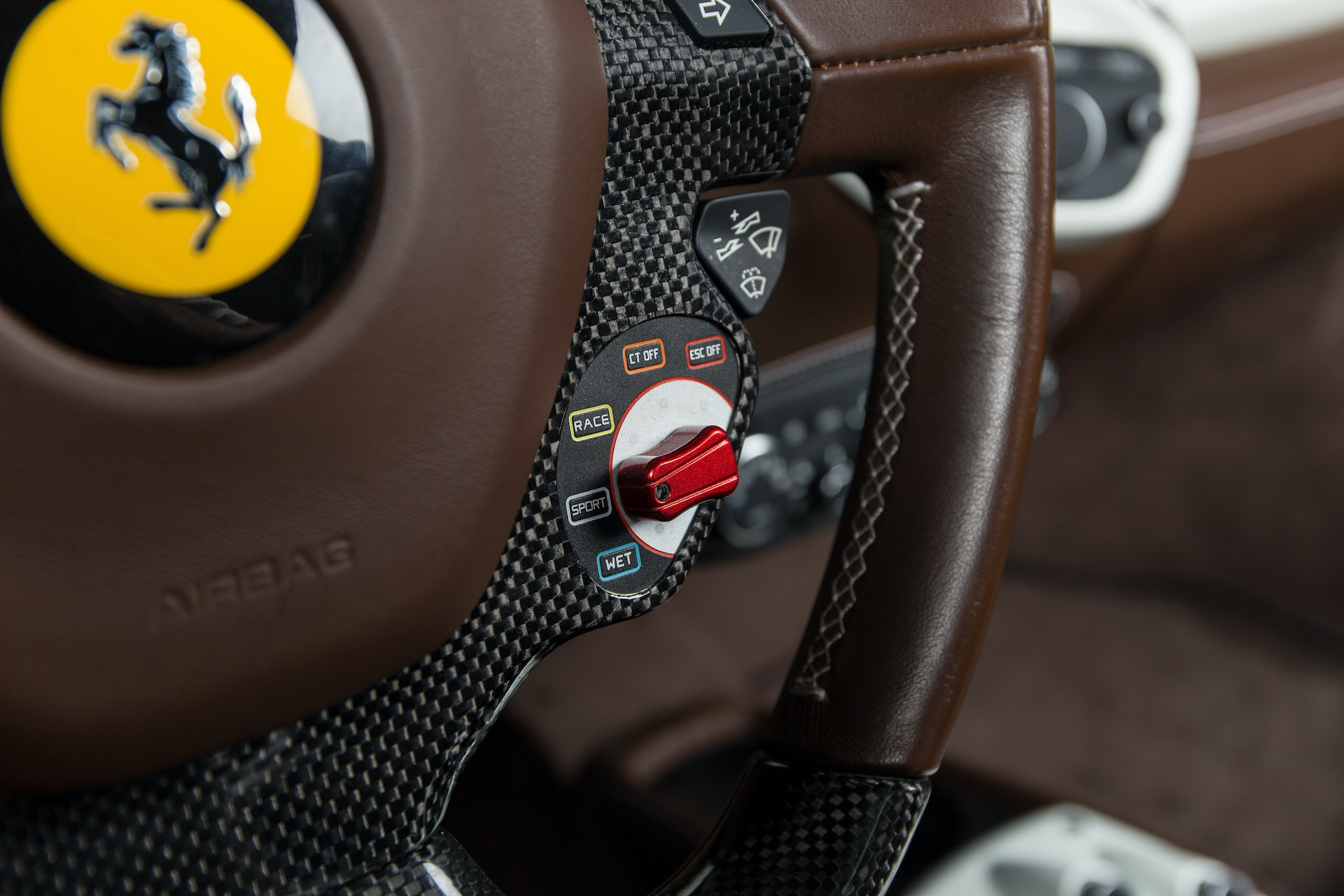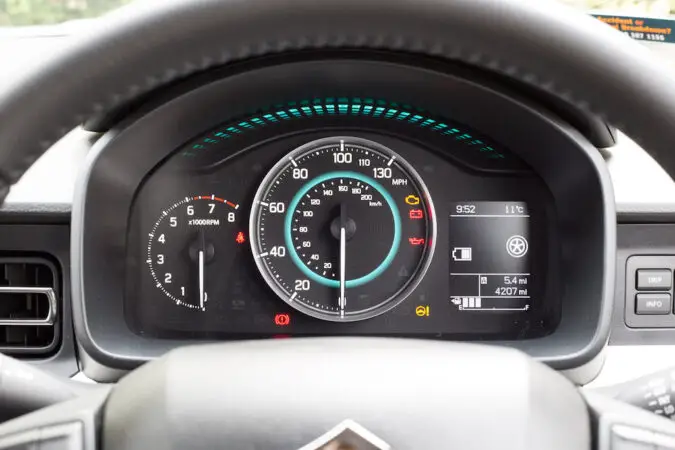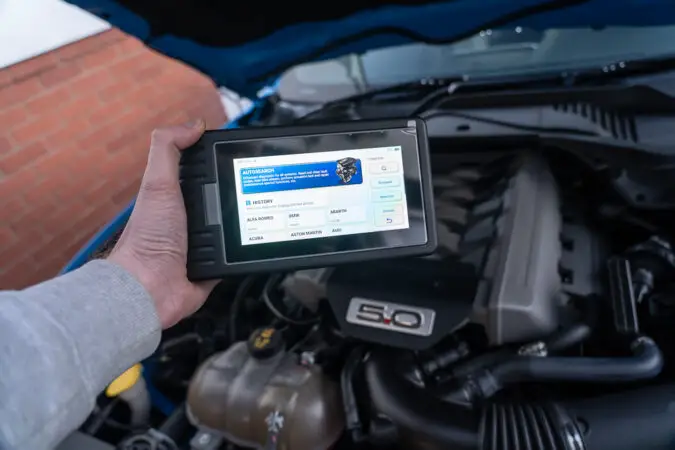If you are a vehicle owner, you would have surely come across the term “TCS” at least once in your life. But, have you ever thought about its meaning? What does TCS mean on a car? If you have found yourself wondering this, congratulations! You have come to the right place.
Car lingo comes with many acronyms such as ABS, VVT, VTEC, and much more. TCS is another term of that nature. Although you might not know what it stands for, we can guarantee that this technology has already prevented you from getting into multiple accidents.
By the end of this article, you’ll know the exact meaning, as well as some other important details associated with this important system. Are you a thing to get to know more about TCS? We know that your curiosity is growing by the minute, so let’s get underway, shall we? Let’s start off by taking a look at the meaning of the term “TCS”.
Traction Control
Take a minute to guess what TCS means on a car. If you came up with the answer “Traction Control System” you deserve a pat on the back. You can learn more about it in our guide on what’s traction control on a car. It is one of the most effective safety systems in any car that prevents the wheels from losing traction no matter what the road conditions are.
This technology made its debut all the way back in the early 1970s. It was initially used only in high-end, rear-wheel drive performance cars. Mercedes and Toyota were the first two manufacturers to bring this technology to mainstream markets in 1987. Later on, in 2012, traction control was named a mandatory safety feature on all vehicles.
Modern traction control systems come as a part of the stability control system. Different manufacturers use different names to refer to this system, including ESC, DTC, ETS, and of course, TCS. In addition to helping the vehicle maintain traction, these systems keep the vehicle facing straight as well.
When seeking the answer to “what does TCS mean on a car” it is important for you to understand how the traction control system works as well. Under slippery road conditions, there is a risk of one wheel of the vehicle rotating faster than the others. This creates a loss of traction, which has the potential to send the vehicle off the road in a spin.
The traction control system works in conjunction with the anti-lock brakes (ABS) and the engine control unit (ECU) in order to limit this spinning and route the power to the wheels with good traction instead. Moreover, traction control prevents understeer and oversteer by regulating the power to the drive wheels.
Traction Control Light
Now that you know the importance of traction control, it can be a bit worrying when the TCS warning light turns on in your dashboard. As you might have already guessed, the main function of the traction control light is to alert the driver about any issues associated with the traction control system. If you’d like more insight, check out our guide on what is traction control.
However, the traction control light functions a bit differently from other warning lights on your dashboard (such as the service traction control light – check out our guide on what does service traction control mean to learn more). Depending on how the light behaves, it can carry several different meanings. Let us look into them one by one.
What Does TCS Mean On A Car #1 – Flashing TCS Light
If you observe that the TCS light on your dashboard is constantly flashing, it usually indicates an error with the traction control system. Typically, a flashing TCS light is accompanied by an ABS warning light as well.
The best and easiest way to diagnose the exact issue is through the use of an OBD2 scanning tool. This scanner allows owners to read and decipher error codes, allowing timely and cost-effective repairs.
Usually, both the TCS and ABS lights turning on simultaneously is an indication that the brakes have lost their anti-lock function. In other words, although the vehicle will slow down once you press the brakes, the wheels will lock up as soon as you apply more pressure. This carries the risk of making the vehicle uncontrollable and resulting in a collision.
What Does TCS Mean On A Car #2 – TCS Light Blinking Under Acceleration
If the TCS light only blinks when you accelerate, it might be an indication that the road surface you are driving on is slippery. This causes the wheels to spin, causing the TCS light to turn on in the process.
The traction light turning on in this manner is not a cause for concern. But, if you notice a reduction in power at the same time, there might be an issue with your vehicle’s ABS sensor.
A faulty ABS sensor sends incorrect data to the vehicle’s onboard computer. As a result, the vehicle will believe that the wheels are spinning when they are actually not. Once again, reading the error codes through an OBD2 reader is the best way to determine whether the ABS control unit is indeed malfunctioning.
What Does TCS Mean On A Car #3 – Constant TCS Light With The Word “Off”
When the traction control system is turned off, the TCS light will constantly stay on along with the “Off” symbol underneath it. Many cars come with the option to turn the traction control off, and it has several benefits. We will talk about these benefits later on in this article.
If you want to turn the traction control system back on, all you have to do is simply press the TCS button. However, the exact method as well as the location of the vehicle may vary from one vehicle to another. You can refer to your vehicle’s owner’s manual to learn how to engage and disengage the traction control system.
This information will surely come in handy the next time someone asks you “what does TCS mean on a car?” Next, we will take a look at some common reasons that cause the traction control to turn on in the first place, as well as potential fixes for those issues.
Service Traction Control
Many different issues with your vehicle can result in the traction control light turning on (or the service traction control light). Here are some of the most common culprits.
- Malfunctioning ABS System
- Wheel Speed Sensor Issues
- Faulty Steering Angle Sensor
- Electrical Gremlins
- Software Bugs
1. Malfunctioning ABS System
As we also mentioned earlier, a malfunctioning ABS system can cause the TCS warning light to turn on. Both these systems share the same systems and sensors for their functions. So, when a component in the ABS system goes wrong (to find out more, check out our explainer on what does ABS stand for in cars), it affects the traction control as well.
The ABS control module is one part that is prone to fail in this manner. If you suspect it to be the culprit behind the TCS warning light, the best course of action is to take your vehicle to a mechanic. Replacing the ABS control module typically costs around $1000. However, if you have the know-how, you can save around $200 by doing the repair yourself.
2. Wheel Speed Sensor Issues
Faulty wheel speed sensors are one of the most common causes of TCS failure. Each wheel houses one of these sensors, and they record how fast each wheel spins and sends that information to the vehicle’s ECU.
In ideal conditions, the traction control system uses information from these sensors to identify when a wheel is losing grip and kicks in to remedy the imbalance.
But if a wheel speed sensor malfunctions, false information about the wheel speed will be sent to the onboard computer. This will cause the TCS light to turn on, and you will feel the traction control system acting up.
The only viable method to fix a faulty wheel speed sensor is to replace it with an all-new part. A professional will charge between $135 – $250 for a wheel speed sensor replacement. On the other hand, a DIY replacement will only cost a little over $100.
3. Faulty Steering Angle Sensor
The steering angle sensor is another critical component in the traction control system. You see, when a vehicle is taking a corner, the outside wheels turn faster than the inside ones. The steering angle sensor reports this information to the ECU, allowing the traction control system to do its work as intended.
However, a faulty steering angle sensor will give erroneous readings, registering a fault in the traction control system in the process.
As a result, the system will falsely kick in when you are turning, disturbing the balance and handling characteristics of the vehicle.
The average steering angle sensor replacement cost ranges between $120 – $550. The part itself can cost anywhere from $50 – $400 depending on the make and model of your vehicle. Similarly, the labor cost also varies and can range between $70 – $150.
4. Electrical Gremlins
Although less likely to happen when compared to the other issues we discussed, wiring and electrical issues can also contribute to TCS problems as well. Even if all the necessary sensors are working as intended, one faulty connection is all that it takes to render the system useless.
Wires close to the wheel speed sensor are the most likely to fail, as they are exposed to the elements at all times. If you suspect that there is an electrical issue with the traction control system, don’t hesitate to have a mechanic go through it.
5. Software Bugs
If you have ruled out all the above possibilities but the traction control light keeps coming back, it just might be due to a software issue. Simply reprogramming the TCS will get rid of the problem. However, reprogramming a TCS should only be done by a certified mechanic.
Sometimes, you may wonder whether it is safe to drive around with the TCS warning light turned on. Although traction control issues don’t make the vehicle undrivable, it affects its ability to handle adverse road conditions significantly.
When driving without traction control, the driver has to always be vigilant about road conditions. If you plan on driving with traction control turned off, be vigilant about your cornering speeds. You never know when the wheel spin will kick in and send you off into a ditch!
Traction Control On Or Off
One of the most common questions that follow “what does TCS mean on a car” is whether to keep this system on or off. There is a reason why all modern vehicles come with this system as a standard feature.
Driving with the traction control on at all times won’t cause your vehicle any harm. Moreover, you don’t have to turn on this system manually either. It will automatically activate when the vehicle starts, keeping you safe at all times.
Some drivers might consider turning off the traction control system for whatever reason. To be fair, in some situations, there are concrete benefits to turning the traction control off. Still, this doesn’t necessarily apply in every situation. First and foremost, this is a danger to you and all your loved ones.
It increases the risk of losing control of your vehicle significantly. Additionally, in vehicles with stability control systems, turning off TCS can impact the steering as well.
Stability control systems work together with traction control to help drivers control their vehicles in adverse conditions. However, once you turn off the traction control system, it might take some extra force to make the vehicle handle as it did before.
If a vehicle pulls to one side when going over rough terrain, owners might be tempted to blame the traction control system. However, there is a high possibility that the pulling is actually the result of bad wheel alignment.
Although alignment problems don’t have a direct effect on traction control, they will cause the system to turn on frequently. In addition, bad wheel alignment degrades the handling and cornering performance of vehicles too.
Overall, we don’t recommend you turn off the traction control system at any point. But, there are a handful of instances where turning off the traction control system is actually beneficial. We will tell you about these benefits in the next section.
Benefits Of Turning Traction Control Off
Almost all vehicle manufacturers don’t recommend owners turn off the traction control system at any point. Yet, they include a way for drivers to do just that. We are of course talking about the traction control toggle.
Different vehicle makers implement the traction control switch in different ways. Some have it in the form of a physical button or a switch, while others have it hidden away in some internal menu of the infotainment system. You can easily spot this toggle by the image of a car with wavy lines underneath its tires.
Once you press this switch/toggle, the TCS warning light on the dashboard will turn on to warn you that the system is now off, and you are on your own. But, on some vehicles, simply pressing the traction control toggle won’t turn the system off.
For example, in order to turn off the traction control in a Ford vehicle, all you have to do is to press and hold the traction control button. Things are a bit complicated if you drive a Volkswagen. First, the vehicle should be in accessory mode. Then, you should turn on the hazard lights, and the gas pedal five times. Traction control will then automatically turn off once the vehicle moves 5 feet.
If you own a vehicle made by the Chrysler corporation, you have to bring the vehicle to a stop with the engine running in order to turn off the traction control system. Then, push and hold the ESC button for five seconds. The vehicle will give off a chime, and display “ESC OFF” in the gauge cluster.
There are a few occasions where turning off the traction control is useful. These instances are,
- Driving Up A Hill
- When You Are Stuck
- Spirited Driving
What Does TCS Mean On A Car, Benefits #1 – Driving Up A Hill
One occasion where you might want to consider turning off the traction control is when driving up a steep and snowy hill. Although you might believe traction control will help you in this situation, it does actually the opposite.
As the conditions are slippery, traction control will cut power to the wheels. This is not ideal when you are driving up a hill and things can get dangerous very fast. So, turning off the traction control and driving up the hill slowly is the best course of action in this situation.
What Does TCS Mean On A Car, Benefits #2 – When You Are Stuck
Traction control is designed to keep your vehicle moving in a straight line during slippery road conditions. So, it won’t offer much help if your vehicle is stuck in snow or sand. Actually, it might even prevent you from moving forward altogether!
Once again, traction control will reduce the power to each wheel, hampering the vehicle’s ability to get unstuck. Instead, you can try turning the system off and using the “rocking” method, where you should first reverse the car a few inches and move forward a few inches until you can eventually get out.
What Does TCS Mean On A Car, Benefits #3 – Spirited Driving
We all like to have some fun once in a while. If you feel like having some fun and own a rear-wheel-drive vehicle, you can turn the traction control off and have some fun. Turning off the TCS allows the rear wheels to spin freely, letting you powerslide around corners.
Not only that, but you can do some burnouts on an empty parking lot as well. However, always remember to be responsible and adhere to the law when doing these activities.
Stability Control VS Traction Control
If you were wondering “what does TCS mean on a car” before the start of this article, you might not have a good idea about stability control too. Contrary to popular belief, these two systems are not the same. There are a few key differences between them.
Stability control is a more advanced version of traction control. Instead of using the brakes to control the movement of each wheel, stability control systems control the power output of the vehicle to send it in the desired direction.
In other words, stability control has the ability to maneuver a vehicle while traction control can only limit the wheel spin.
Conclusion For What Does TCS Mean On A Car
TCS stands for “Traction Control System” which is a lifesaving technology that comes as standard in all modern vehicles. By monitoring vehicle behavior through an array of sensors, this system can optimize the grip on each tire during slippery road conditions.
Although it is true that turning off the TCS when stuck or driving up a snowy hill can grant you some benefits, we recommend you to keep it turned during all other times as it can be the difference between you getting into an accident, or leaving unscathed.
FAQs On What Does TCS Mean On A Car
What Is Stabilitrak
StabiliTrak is the name General Motors uses to call its proprietary stability control technology. It comes in most Chevrolet and GM vehicles and promises to offer more advanced features than a traditional ESC system.
What Is Traction Control
Traction control, also known as TCS, ESC, DTC, or ETS, is a technology that helps your vehicle to maintain traction during slippery road conditions. It uses the same sensors as the ABS system and works together with it to limit wheelspin at all times.
What Does Traction Control Do
Limiting wheelspin is the main purpose of the traction control system. If the system that a wheel is losing traction or spinning too fast, it applies the brakes to that wheel or reduces the engine power to it. This allows the wheel to regain traction, keeping the occupants of the vehicle safe.
What Does TCS Stand For
TCS stands for Traction Control System. This technology made its debut in the 1970s and has become an important safety feature ever since.
Why Is My Traction Control Light On
The traction control light can turn on due to many reasons. Some of the most common reasons include faulty wheel speed sensors, a malfunctioning ABS system, wiring problems, issues with the steering angle sensor as well as software issues in the traction control system itself. If your traction control light has come on, we recommend you take your vehicle to a certified mechanic as soon as possible.
Image Notes:
- What-Does-TCS-Mean-On-A-Car.png sourced from https://unsplash.com/photos/e1kIsf7n0Fw





